Shoes are an important part of any outfit. They guard against slips and falls, promote proper walking and standing postures, and protect your feet from bruises and injury.
However, shoes can be difficult for older people to put on, and the person may also have foot conditions such as bunions that make it difficult to find the right size.
At ZenHeel, we offer a wide range of shoe styles and sizes to suit men's and women's needs.Keep in mind each of our shoe styles vary slightly in sizing so it is best to review the product's specific size chart.


How to Measure for Adaptive Shoe Sizes at Home
First, you need to gather your materials: two pieces of paper, a pencil, and a measuring tape or ruler. Having a friend can help you, but you can still measure your feet by yourself. Here are the steps to measure your feet:

Place the first piece of paper on a hard surface and position your foot in the middle of the sheet of paper. Trace around your foot, or have a friend do it for you if you have trouble bending over.Repeat the same process for the other foot.
Take the ourlines of both feet and measure from the tip of the longest toe to the end of the heel. In most people, the big toe will be the longest toe, but sometimes the index toe is the longer one. Use whichever one sticks out more as your starting point. Don't round up or down on the measurement — accuracy is key here!If your feet have slightly different measurements, that's fine. It's common for one foot to be slightly larger than the other. Add 1/4 to 1/2 an inch to the length in order to give some toe wiggle room.
Take the largest measurement and compare it to the size chart for the brand you want to buy from. That is the shoe that you should buy.To determine the width, measure across the broadest part of the foot (usually the ball of the foot right below your toes). Once again, compare that to the size chart to determine if you need a narrow, regular, or wide shoe.
<div class="dynamic-checkout__content" id="dynamic-checkout-cart" data-shopify="dynamic-checkout-cart"> <shopify-accelerated-checkout-cart wallet-configs="[{"name":"shop_pay","wallet_params":{"shopId":67151888524,"merchantName":"ZenHeel.com"}},{"name":"paypal","wallet_params":{"shopId":67151888524,"countryCode":"CA","merchantName":"ZenHeel.com","phoneRequired":false,"companyRequired":false,"shippingType":"shipping","shopifyPaymentsEnabled":true,"paymentIntent":"CAPTURE","merchantId":null,"sdkUrl":"https://www.paypal.com/sdk/js?components=buttons\u0026commit=false\u0026currency=USD\u0026locale=en_US\u0026client-id=AfUEYT7nO4BwZQERn9Vym5TbHAG08ptiKa9gm8OARBYgoqiAJIjllRjeIMI4g294KAH1JdTnkzubt1fr\u0026intent=capture"}}]" access-token="e2c4220244b46ac284f7d8ff6f21277d" buyer-country="CA" buyer-locale="en" buyer-currency="USD" shop-id="67151888524" cart-id="1695760e0f40ac919fb7d4ee03513b29" > <div data-shopify-buttoncontainer="true"> <ul class='wallet-cart-grid wallet-cart-grid--skeleton' role="list"> <li data-testid='grid-cell' class='wallet-cart-button-container'><div class='wallet-cart-button wallet-cart-button__skeleton' role='button' disabled aria-hidden='true'> </div></li><li data-testid='grid-cell' class='wallet-cart-button-container'><div class='wallet-cart-button wallet-cart-button__skeleton' role='button' disabled aria-hidden='true'> </div></li> </ul> </div> </shopify-accelerated-checkout-cart> <small id="shopify-buyer-consent" class="hidden" aria-hidden="true"> One or more of the items in your cart is a recurring or deferred purchase. By continuing, I agree to the <span id="shopify-subscription-policy-button">cancellation policy</span> and authorize you to charge my payment method at the prices, frequency and dates listed on this page until my order is fulfilled or I cancel, if permitted. </small> </div>



